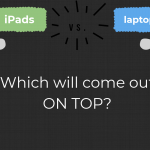As I wrap up the final module of my summer AQ, Integration of Information and Computer Technology in Instruction, Part 2, I am prompted to reflect on my learning. And what better place than a blog for doing that? Module 1: A Vision of 21st Century Learning Module 1 focused on setting the stage for technology […]
I wrote this reflection on the value of PLNs for my AQ course, but my blog seemed like an ideal place to cross-post it given the content. I already have a fairly well-established PLN, and I can pretty confidently agree with the sentiment found in one of the articles: “Interestingly, many teachers who are active online […]
N.B: I am currently enrolled in (and neck-deep in course content for) a summer AQ course on “Integration of Information and Computer Technology in Instruction, Part 2” and decided to post one of my assignments as a blog post. I’d love for my Cohort 21 community to weigh in on the discussion and fill me […]
